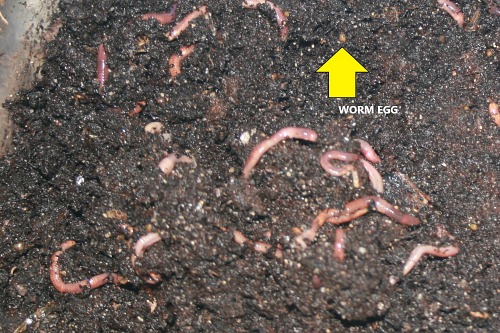Unlock the Secrets of Red Wigglers: Your Overview to Composting Success
The assimilation of red wigglers right into composting methods presents a substantial opportunity for enhancing soil health and wellness and promoting sustainability. These organisms are not simply effective recyclers of organic waste; they provide a myriad of benefits that can transform garden administration. Comprehending their demands and actions is critical for optimizing their possibility, from establishing a suitable worm container to feeding them the ideal materials. As we check out the essential parts of effective vermicomposting, one might wonder exactly how these little animals can bring about a more vivid and effective yard ecological community.

What Are Red Wigglers?
(Lake Rhodhiss Bait)Red wigglers, clinically referred to as Eisenia fetida, are a varieties of earthworm primarily used in composting due to their impressive ability to break down raw material efficiently. These worms are defined by their reddish-brown coloration and a segmented body, usually determining between 3 to 4 inches in length. Unlike other earthworm types, red wigglers grow in abundant, organic atmospheres, making them excellent for vermicomposting systems.
Indigenous to The United States And copyright, they are typically discovered in decaying fallen leaves and compost heap, where they play a crucial function in nutrient recycling. Their adaptation to living in a wet, cardiovascular atmosphere enables them to eat big quantities of organic waste, damaging it down into nutrient-rich spreadings that improve soil wellness.
Red wigglers duplicate quickly, with a solitary worm with the ability of creating numerous cocoons every week, each containing multiple hatchlings. This fast recreation price adds to their efficiency in composting operations. They choose temperatures in between 60 ° F and 80 ° F, and their task degree boosts substantially within this variety, more assisting in the disintegration procedure. Understanding the biology and behavior of red wigglers is vital for optimizing their potential in composting applications.
Benefits of Utilizing Red Wigglers
Harnessing the power of red wigglers in composting supplies countless advantages that boost dirt health and wellness and advertise sustainable waste management. These amazing microorganisms effectively damage down raw material, changing kitchen area scraps and backyard waste right into nutrient-rich vermicompost. This completed item is exceptionally valuable for plant development, as it boosts dirt structure, enhances wetness retention, and boosts nutrient schedule.

(Lake Rhodhiss Bait)Furthermore, the presence of red wigglers in your composting system can increase the composting procedure, producing top notch compost in a portion of the moment contrasted to conventional methods. The spreadings produced by these worms are additionally including helpful bacteria that better improve the dirt environment.
Establishing Your Worm Container
Producing a reliable worm bin is a simple process that can considerably boost your composting initiatives. Worm containers can be made from plastic storage space containers, wood boxes, or commercially offered worm bins.
Next, prepare the bed linens material, which acts as the worms' habitat. A mix of shredded newspaper, cardboard, and coconut coir works well, giving a comfortable environment for the worms. Objective for a bed linens deepness of regarding 4-6 inches. Moisten the bed linens gently, guaranteeing it looks like a damp sponge without excess water pooling near the bottom.

Feeding Your Red Wigglers
To guarantee the health and productivity of your red wigglers, it is vital to offer them with a well balanced diet that meets their nutritional requirements. Red wigglers grow on a diverse range of natural products, which not just supply essential nutrients but additionally advertise effective composting.
Begin by integrating kitchen area scraps such as veggie peels, fruit cores, and coffee premises. Stay clear of citrus fruits, onions, and garlic, as these can be destructive to worm wellness. Furthermore, introduce shredded paper, cardboard, and dry leaves to create a well-aerated environment.
Feeding frequency should be kept track of; typically, worms can consume half their body weight in food weekly. It is essential to avoid overfeeding, as excess food can result in unpleasant odors and attract pests. A good practice is to add food in percentages, allowing worms to process it prior to introducing much more.
Maintaining dampness degrees is likewise essential; the bed linen ought to perspire yet not soaked. Be sure to regularly inspect the temperature and pH degrees of the container to ensure an optimum environment for your red wigglers, inevitably improving their composting effectiveness.
Harvesting and Utilizing Garden Compost
A successful composting process with red wigglers finishes in the rich, dark garden compost referred to as vermicompost, which can significantly improve dirt wellness and plant growth. Harvesting this nutrient-dense material generally takes place every three to 6 months, depending on the size of your system and the amount of raw material being refined.
To collect, gently separate the compost from the worms and any type of undecomposed products. One efficient method entails moving the components of the bin to one side and adding fresh bedding and food to the vacant space, encouraging the worms to move. After a few days, the compost can be gathered from the contrary side.
It is essential to use vermicompost correctly to maximize its benefits. By integrating vermicompost right into your gardening routine, you not only reuse natural waste but also create a successful environment that supports lasting horticulture methods.
Verdict
In summary, red wigglers act as remarkable allies in composting initiatives, transforming organic waste into nutrient-rich vermicompost (Red Wiggler Express). Their unique biological features and efficient waste processing abilities contribute significantly Learn More Here to lasting horticulture practices. By understanding the optimum problems for their habitat, feeding requirements, and garden compost harvesting strategies, gardeners can enhance soil wellness and promote plant vitality. Accepting vermicomposting not just lowers land fill waste but additionally fosters a much more environmentally responsible approach to gardening and resource management.